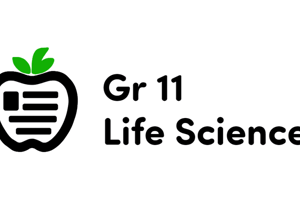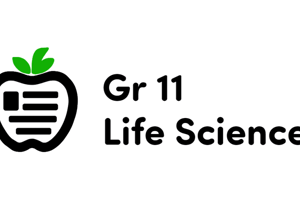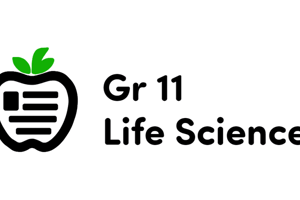Podcast
Questions and Answers
What is the primary energy source that drives the process of photosynthesis?
What is the primary energy source that drives the process of photosynthesis?
- Chemical energy from organic compounds
- Kinetic energy from wind
- Light energy from the sun (correct)
- Thermal energy from the environment
In which part of the chloroplast do the light-dependent reactions take place?
In which part of the chloroplast do the light-dependent reactions take place?
- Thylakoid membranes (correct)
- Mitochondria
- Nucleus
- Stroma
What is the byproduct of photosynthesis that is necessary for aerobic respiration in animals?
What is the byproduct of photosynthesis that is necessary for aerobic respiration in animals?
- ATP
- NADPH
- Glucose
- Oxygen (correct)
At what temperature does photosynthesis typically occur at its optimal rate?
At what temperature does photosynthesis typically occur at its optimal rate?
What is the equation for photosynthesis?
What is the equation for photosynthesis?
Which of the following factors can increase the rate of photosynthesis?
Which of the following factors can increase the rate of photosynthesis?
What is the name of the process by which CO2 is fixed into a 3-carbon molecule in the Calvin cycle?
What is the name of the process by which CO2 is fixed into a 3-carbon molecule in the Calvin cycle?
What is the energy currency that is produced in the light-dependent reactions and used in the Calvin cycle?
What is the energy currency that is produced in the light-dependent reactions and used in the Calvin cycle?
Which of the following is NOT a reactant in the equation for photosynthesis?
Which of the following is NOT a reactant in the equation for photosynthesis?
What is the primary function of the stroma in the chloroplast?
What is the primary function of the stroma in the chloroplast?
What is the role of chlorophyll in photosynthesis?
What is the role of chlorophyll in photosynthesis?
Flashcards are hidden until you start studying
Study Notes
Overview of Photosynthesis
- Photosynthesis is the process by which plants, algae, and some bacteria convert light energy from the sun into chemical energy in the form of organic compounds, such as glucose.
- This process is essential for life on Earth, as it provides the energy and organic compounds needed to support the food chain.
Light-Dependent Reactions
- Occur in the thylakoid membranes of the chloroplast and require light energy
- Light energy is absorbed by pigments such as chlorophyll and converted into ATP and NADPH
- ATP and NADPH are then used to fuel the light-independent reactions
Light-Independent Reactions (Calvin Cycle)
- Occur in the stroma of the chloroplast and do not require light energy
- ATP and NADPH from the light-dependent reactions are used to convert CO2 into glucose (C6H12O6)
- This process involves the fixation of CO2 into a 3-carbon molecule, which is then converted into glucose
Equation for Photosynthesis
- 6 CO2 + 6 H2O + light energy → C6H12O6 (glucose) + 6 O2
Importance of Photosynthesis
- Produces oxygen (O2) as a byproduct, which is necessary for aerobic respiration in animals
- Provides energy and organic compounds for the food chain
- Supports the growth and development of plants, which are the primary producers of ecosystems
Factors Affecting Photosynthesis
- Light intensity: increased light intensity can increase the rate of photosynthesis
- Temperature: optimal temperature for photosynthesis is between 20-30°C
- Water availability: sufficient water is necessary for photosynthesis to occur
- CO2 concentration: increased CO2 concentration can increase the rate of photosynthesis
Overview of Photosynthesis
- Photosynthesis converts light energy into chemical energy in the form of organic compounds like glucose.
- This process is crucial for life on Earth, supporting the food chain by providing energy and organic compounds.
Light-Dependent Reactions
- Occur in thylakoid membranes of the chloroplast and require light energy.
- Light energy is absorbed by pigments like chlorophyll and converted into ATP and NADPH.
- ATP and NADPH are used to fuel the light-independent reactions.
Light-Independent Reactions (Calvin Cycle)
- Occur in the stroma of the chloroplast and do not require light energy.
- ATP and NADPH from the light-dependent reactions are used to convert CO2 into glucose (C6H12O6).
- The process involves the fixation of CO2 into a 3-carbon molecule, which is then converted into glucose.
Equation for Photosynthesis
- 6 CO2 + 6 H2O + light energy → C6H12O6 (glucose) + 6 O2
Importance of Photosynthesis
- Produces oxygen (O2) as a byproduct, necessary for aerobic respiration in animals.
- Provides energy and organic compounds for the food chain.
- Supports the growth and development of plants, the primary producers of ecosystems.
Factors Affecting Photosynthesis
- Light intensity: increased light intensity can increase the rate of photosynthesis.
- Temperature: optimal temperature for photosynthesis is between 20-30°C.
- Water availability: sufficient water is necessary for photosynthesis to occur.
- CO2 concentration: increased CO2 concentration can increase the rate of photosynthesis.
Studying That Suits You
Use AI to generate personalized quizzes and flashcards to suit your learning preferences.




